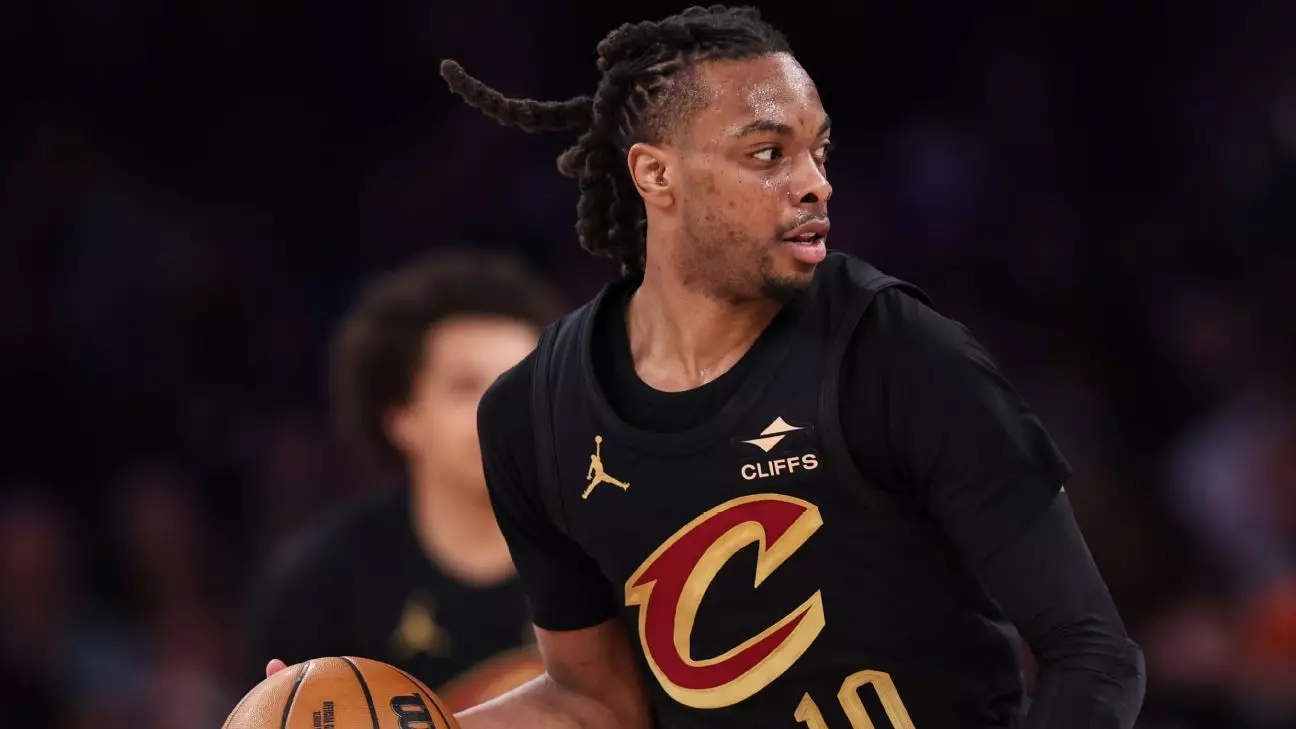As the Cleveland Cavaliers gear up for their anticipated Eastern Conference semifinal series against the Indiana Pacers, the uncertainty surrounding All-Star guard Darius Garland’s availability looms heavily over the team. Listed as questionable, Garland’s sprained left big toe presents not only a personal hurdle but also raises significant concerns about the Cavaliers’ chances in the playoff series. The fractures in the team’s dynamic become evident when assessing their recent performance during the first round, where Garland’s absence was palpably felt even in their successful sweep of the Miami Heat.
Garland’s arresting ability to create shots and facilitate plays has set a high standard for the Cavaliers’ offensive strategy. During the regular season, his remarkable stats—averaging 20.6 points and 6.7 assists—showcase his importance. However, the realistic possibility of his lingering injury not only complicates his participation but also threatens to dismantle the team’s cohesion as they navigate the high-stakes atmosphere of the playoffs.
Coaching Challenges Amid Injury Concerns
Cleveland’s head coach, Kenny Atkinson, is on the edge of a decision-making cliff. With the playoffs in full swing, he finds himself challenged by the dual responsibilities of maintaining team morale and strategizing for Garland’s potential absence. Atkinson’s comments reflect the precariousness of the situation: “We’re just in this kind of area where you just got to kind of see day by day.” Such phrases hint at an underlying anxiety that transcends mere preparation—it symbolizes a battle against time and conditioning.
The cavalcade of injuries has unveiled a critical layer within coaching—managing player health while fine-tuning game plans. Atkinson’s honesty about Garland’s condition hints at a deeper understanding of injury management in high-pressure scenarios. The potential long-term ramifications leave the team’s fate hanging by a thread, and the pressure intensifies as the playoffs progress.
Team Resilience and Adaptation
Notably, Garland’s injury has accelerated the learning curve for his teammates. Players like Merrill, who stepped up during Garland’s absence, are now playing under the bright lights of playoff intensity. This unexpected elevation can foster resilience within the squad, pushing them to adapt quickly and search for new winning formulas. While it may seem daunting to replace an All-Star player, it also presents a rare opportunity for younger talents to shine and inject fresh energy into the team’s gameplay.
Moreover, navigating through adversity often uncovers hidden strengths, and the Cavaliers may emerge more united and tenacious from this testing phase. While the stakes are high and the pressure is palpable, the emotional growth that stems from overcoming obstacles can lead to a renewed sense of purpose and an unyielding team spirit—a characteristic that often proves invaluable during championship runs.
The Road Ahead
As the disquieting narrative surrounding Garland’s injury unfolds, the Cavaliers’ journey through the playoffs becomes an intricate balance of hope and caution. Will they rise to the occasion, harnessing the unpredictable nature of the playoffs to forge a path without their star player, or will the absence create a void too large to fill? The resolve of both Garland and his teammates will shape the narrative as they pursue their aspirations of advancing deep into the playoffs. Cleveland must embrace these challenges, for the road to triumph is seldom smooth—and the ability to adapt could spell the difference between success and disillusionment.

